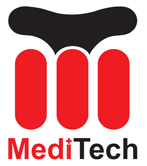Les salles blanches sont des environnements hautement contrôlés où la contamination doit être évitée à tout prix pour maintenir l'intégrité du produit. Cleanroom swabs are an important tool for cleaning and sampling surfaces in a cleanroom. Choosing the right swab for the specific application is crucial to achieve optimal results. Dans cet article, we will discuss how to choose the right cleanroom swab for your specific application.
Étape 1: Consider the Material
Cleanroom swabs come in different materials, such as polyester, foam, cotton, and spun nylon. The swab material must be compatible with the chemical properties of the solution used for cleaning or sampling. Par exemple, polyester swabs are ideal for isopropyl alcohol cleaning, while foam swabs are better suited for cleaning petroleum-based liquids. It’s essential to choose a swab with a low particle count with little or no fiber shedding to avoid contamination.
Étape 2: Consider the Size
Swab size is also an essential consideration when choosing the right swab for your specific application. Swabs come in different sizes, and it’s important to choose the right size based on the area you need to clean or sample. The swab should be large enough to cover the area, but not too big that it becomes difficult to maneuver.
Étape 3: Consider the Tip Shape
The tip shape of the swab is essential in determining which is the best for your specific application. Some swabs feature a pointed tip, while others have a rounded or circular tip. Pointed tips may be ideal for reaching tight corners, while rounded swabs are perfect for applying gentle pressure to surfaces. En outre, the swab’s tip should be resistant to abrasion to avoid leaving fibers on the surfaces.
Étape 4: Consider Sterilization
When working in cleanroom environments, it’s important to use sterile swabs to avoid contamination. Several cleaning methods, like autoclaving, gamma irradiation, or ethylene oxide, can sterilize cleanroom swabs. Choosing the right method depends on the swab material, tip shape, and other factors.
Étape 5: Consider Ease of Handling
Pour terminer, it’s crucial to choose a swab that is easy to handle in terms of grip and flexibility. Swabs that have short handles are effective in cleaning small areas, while long handles provide better reach for larger areas. Flexibility is another factor to consider, especially when cleaning around corners, and swabs with highly-flexible handles make cleaning more comfortable.
Conclusion
Choosing the right cleanroom swab is essential in ensuring that cleanroom environments remain free from contaminants. Matériel, size, tip shape, stérilisation, and ease of handling are the key factors to consider when choosing the right swab for your specific application. Taking the time to choose the right swab can help prevent product contamination, minimize production downtime, and improve overall production quality.
 Écouvillons en mousse pour salle blanche, Écouvillons en polyester, Fabricant de kits de nettoyage d'imprimante – MédiTech
Écouvillons en mousse pour salle blanche, Écouvillons en polyester, Fabricant de kits de nettoyage d'imprimante – MédiTech